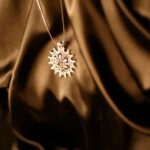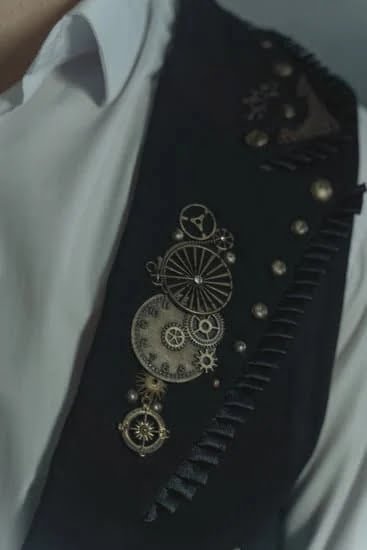Diamond jewelry is known for its brilliance and sparkle, but over time, it can lose its luster due to dirt, oils, and everyday wear. Regularly polishing diamond jewelry is essential to maintain its beauty and ensure it continues to shine bright. In this article, we will explore the importance of regular jewelry polishing and provide a comprehensive guide on how to polish diamond jewelry effectively.
When diamond jewelry is worn daily, it naturally accumulates dirt, oils from the skin, and other substances that can dull its appearance. Regular polishing helps remove these impurities and restores the brilliant sparkle that diamonds are known for. Additionally, everyday wear can cause scratches or dullness on the surface of the jewelry, further diminishing its beauty. By regularly polishing diamond jewelry, these imperfections can be minimized or even eliminated.
Understanding the characteristics of diamond jewelry is crucial when it comes to polishing. Different types of diamond jewelry such as rings, earrings, necklaces, and bracelets require different cleaning techniques and tools. Additionally, each piece may have unique features or settings that need special attention during the polishing process. By understanding these factors, you can ensure that your diamond jewelry is polished effectively without causing any damage.
In the next sections of this article, we will discuss in detail how to gather the necessary tools for diamond jewelry polishing, precautions to take before starting the process, step-by-step instructions on how to polish diamond jewelry effectively,and various techniques for achieving optimal results. We will also provide extra tips for maintaining the sparkle of your diamonds and addressing common issues that may arise during the polishing process.
So let’s begin our journey towards showcasing your sparkling diamond jewelry.
Understanding the Characteristics of Diamond Jewelry
Diamond jewelry comes in various forms, including rings, earrings, necklaces, and bracelets. Each piece has its unique characteristics and settings that may affect the polishing process. It is important to understand these features to ensure that the jewelry is properly cared for and maintained.
When it comes to diamond rings, there are different types of settings to consider. Common settings include prong setting, bezel setting, channel setting, and halo setting. Each setting requires special attention during the polishing process to avoid damaging the stones or compromising the integrity of the setting.
For earrings, necklaces, and bracelets, the design and structure should also be taken into account. Dangling earrings with multiple diamonds may require extra care to ensure that all the stones are thoroughly cleaned and polished. Necklaces with intricate designs or chains may need gentle handling and specialized tools to reach all the nooks and crannies.
It is crucial to familiarize yourself with the specific characteristics of your diamond jewelry before attempting any polishing or cleaning techniques. If you are unsure about how to properly care for a particular piece or if it has any unique features that require special attention, it is best to consult a professional jeweler for guidance.
| Types of Diamond Jewelry | Special Features/Settings | Care Instructions |
|---|---|---|
| Diamond Rings | – Prong Setting
| – Inspect prongs regularly
|
| Earrings | – Stud Earrings
| – Check for loose stones regularly
|
| Necklaces | – Pendant Necklaces
| – Handle chains with care to avoid tangling or breakage
|
| Bracelets | – Tennis Bracelets
| – Pay attention to delicate links or charms
|
Gathering the Necessary Tools and Supplies for Diamond Jewelry Polishing
Jewelers Cloth
One of the essential tools for diamond jewelry polishing is a jewelers cloth. This specialized cloth is designed to effectively remove dirt, oils, and smudges from the surface of the jewelry without scratching or damaging it. Jewelers cloth is usually made from soft microfiber material that is gentle enough for diamond jewelry while still being effective at cleaning and polishing.
Soft-Bristled Brushes
Soft-bristled brushes are another important tool in your diamond jewelry polishing arsenal. These brushes are specially designed with fine bristles that can reach into crevices and hard-to-reach areas of your jewelry to remove dirt and grime. When using a soft-bristled brush, be sure to use gentle strokes to avoid any potential scratches or damage to the diamonds or metal.
Cleaning Solutions
Having the right cleaning solution is crucial for properly polishing diamond jewelry. There are various cleaning solutions available on the market, specifically formulated for use on precious stones and metals. Look for a mild cleaning solution that is safe for diamonds, as harsh chemicals may damage or discolor the stones over time.
Polishing Compounds
In addition to cleaning solutions, you may also need polishing compounds to achieve maximum sparkle and shine for your diamond jewelry. Polishing compounds contain abrasive particles that help remove scratches and imperfections from the surface of the diamonds, resulting in a brilliant finish.
Protective Gloves
While not directly related to the actual polishing process, it is worth mentioning that wearing protective gloves during diamond jewelry polishing can help prevent fingerprints, oils, or other substances from transferring onto your jewelry during handling.
By gathering these necessary tools and supplies before starting the diamond jewelry polishing process, you will be well-prepared to effectively clean and restore the brilliance of your precious pieces.
Precautions to Take Before Polishing Diamond Jewelry
One of the most important steps in polishing diamond jewelry is taking precautions before starting the process. It is crucial to ensure that the jewelry is in good condition and free from any potential damages or loose stones. By taking these necessary precautions, you can prevent further harm to your precious pieces and ensure a successful polishing experience.
Before beginning the polishing process, it is essential to remove diamond jewelry before engaging in any activities that may cause damage. This includes household chores, sports activities, or using beauty products. Chemicals present in cleaning products or beauty solutions can affect the integrity of the metal settings or even discolor and dull the diamonds themselves.
Additionally, it is crucial to thoroughly inspect your diamond jewelry for any loose stones or damaged prongs. If there are any loose stones, it is recommended to have them tightened by a professional jeweler before proceeding with polishing. Polishing could potentially worsen the situation by dislodging more stones if they are not securely set.
Taking precautions before polishing your diamond jewelry will help ensure that you approach the process with care and minimize any risks of causing damage. By doing so, you can maintain the integrity and longevity of your precious pieces while restoring their luminous sparkle.
| Precaution | Explanation |
|---|---|
| Remove Jewelry Before Activities | Avoid exposing diamond jewelry to chemicals present in cleaning products or beauty solutions. |
| Inspect for Loose Stones | Check for any loose stones or damaged prongs that could be exacerbated during the polishing process. |
Step-by-Step Guide
Step 1: Cleaning the Jewelry
The first step in polishing diamond jewelry is to clean it thoroughly. Start by preparing a solution of mild soap and lukewarm water in a small bowl. Submerge the jewelry in the soapy water and use a soft-bristled brush to gently scrub away any dirt or debris. Pay special attention to the crevices and hard-to-reach areas where dirt can accumulate.
Step 2: Drying the Jewelry
After cleaning, rinse the diamond jewelry under running water to ensure that all soap residue is removed. Use a lint-free cloth or microfiber towel to gently pat it dry. Avoid using tissues or paper towels as they can leave behind fibers or scratches.
Step 3: Polishing the Jewelry
Once the jewelry is thoroughly dry, it’s time to polish it. Take a jeweler’s cloth, specifically designed for polishing precious metals and diamonds, and gently buff the surface of the jewelry using circular motions. The cloth will help remove any remaining smudges, fingerprints, or minor scratches while restoring its brilliance.
Step 4: Using Polishing Compounds (Optional)
For stubborn stains or deeper scratches on your diamond jewelry, you may consider using a polishing compound. Apply a small amount of the compound onto a soft cloth and carefully rub it over the affected area using light pressure. Follow up with another round of gentle polishing using a clean portion of the cloth.
Remember that certain diamond settings may require different polishing techniques. For example, pieces with pavé or channel-set diamonds should be polished with extra caution to avoid dislodging any stones.
By following these step-by-step instructions, you can effectively polish your diamond jewelry at home and keep it looking as dazzling as when you first bought it. Regular maintenance will not only enhance its appearance but also extend its lifespan, allowing you to showcase your sparkling diamond jewelry with pride.
Understanding Different Polishing Techniques for Diamond Jewelry
When it comes to polishing diamond jewelry, there are various techniques that can be used to achieve the desired shine and sparkle. Each method has its own advantages and considerations, so it’s important to understand the different polishing techniques available.
- Steam Cleaning: One popular technique for cleaning diamond jewelry is steam cleaning. This method involves using high-pressure steam to remove dirt and grime from the surface of the diamonds. Steam cleaning is particularly effective at removing oils and lotions that can dull the brilliance of diamonds.
However, it is important to note that not all types of diamond jewelry can withstand steam cleaning. Jewelry with certain gemstone settings or delicate materials may be more prone to damage from this method. - Ultrasonic Cleaning: Another common technique for polishing diamond jewelry is ultrasonic cleaning. This method uses ultrasonic waves to create tiny bubbles in a cleaning solution, which then agitate and lift dirt and debris away from the diamonds. Ultrasonic cleaners are especially effective at reaching hard-to-clean areas like crevices and settings.
It’s important to use caution when using ultrasonic cleaners as they can potentially damage certain gemstones or weaken fragile prongs. Always check with a jeweler before using this technique on your diamond jewelry. - Polishing Cloths: For those who prefer a gentler approach, polishing cloths can be an excellent option for maintaining the brilliance of diamond jewelry. These specially designed cloths are made with micro-abrasives that gently remove tarnish and restore shine without causing any damage.
Simply rub the jewelry with the cloth in a back-and-forth motion until desired results are achieved. Polishing cloths are safe for most types of diamond jewelry but may not be as effective on heavily tarnished pieces.
By understanding these different techniques for polishing diamond jewelry, you can choose the method that best suits your needs and preferences while ensuring the safety of your precious gemstones. Remember to always follow any manufacturer’s instructions and consult with a professional jeweler if you are unsure about the appropriate method for your specific piece of jewelry. With the right polishing technique, you can bring back the brilliant shine and sparkle to your diamond jewelry for years to come.
Extra Tips for Maintaining the Sparkle of Diamond Jewelry
Maintaining the sparkle and brilliance of diamond jewelry goes beyond regular polishing. Proper care and maintenance are crucial for keeping your precious pieces looking their best. In addition to following the step-by-step guide for polishing diamond jewelry, here are some extra tips to help you prolong the shine and luster:
- Avoid exposing diamond jewelry to chemicals: Chemical substances like bleach, chlorine, and harsh cleaning agents can damage or discolor diamonds and their settings. It is important to remove your jewelry before swimming in chlorinated pools, using cleaning products, or applying cosmetics.
- Store your jewelry properly: When not being worn, diamond jewelry should be stored in a soft cloth pouch or a separate compartment in a jewelry box. This prevents scratching or tangling with other items. Additionally, storing diamonds away from heat sources and direct sunlight helps maintain their brilliance.
- Schedule regular professional cleanings: While regular at-home cleaning is essential, professional cleanings by a jeweler are recommended on an annual basis or when necessary. Jewelers have access to specialized equipment that can thoroughly clean and restore the sparkles of your diamonds.
- Be cautious during physical activities: As durable as diamonds are, they can still become damaged if subjected to excessive force or impact. Remove diamond jewelry before engaging in any rigorous activities such as sports, weightlifting, or household chores that involve exertion.
- Inspect your jewelry regularly: Check your diamond jewelry periodically for loose stones or damaged prongs that may compromise its structural integrity. Promptly address any issues by taking it to a reputable jeweler for repair.
By incorporating these extra tips into your diamond jewelry care routine, you will not only maintain its sparkle but also ensure its longevity and value for generations to come. Remember that prevention is key when it comes to preserving the beauty of your cherished pieces.
Troubleshooting Common Issues During Diamond Jewelry Polishing
When polishing diamond jewelry, it is important to be aware of common issues that may arise during the process. One common issue is the occurrence of scratches on the surface of the jewelry. Scratches can dull the appearance of the diamond and diminish its sparkle.
To address this problem, it is recommended to use a polishing cloth specifically designed for diamond jewelry. Gently rub the cloth on the surface of the jewelry in a circular motion until the scratches are minimized or removed.
Another issue that may arise is the loss of shine and brilliance in the diamond. This can happen if there is a build-up of oils or residue on the surface of the jewelry. To rectify this issue, it is advised to clean the jewelry with a mild soap and lukewarm water. After cleaning, rinse thoroughly and dry gently with a soft cloth. This should help restore the shine and brilliance of your diamond jewelry.
In some cases, diamond jewelry may become tarnished or lose its luster due to exposure to chemicals or improper storage. If you notice that your jewelry has become tarnished or dull, you can try using a specialized cleaning solution made for diamonds.
Follow the instructions carefully and avoid using harsh chemicals that may damage the metal setting or stones. Additionally, proper storage in a soft pouch or separate compartments in a jewelry box can help prevent damage and maintain the sparkle of your diamond jewelry.
By being aware of these common issues and knowing how to address them, you can troubleshoot any problems that arise during the diamond jewelry polishing process. Remember to take your time and handle your precious pieces with care to ensure they continue shining brightly for years to come.
Conclusion
In conclusion, regular polishing is essential for maintaining the brilliance and sparkle of diamond jewelry. Over time, dirt, oils, and everyday wear can impact the appearance of diamond jewelry, causing it to lose its shine. By regularly polishing your diamond jewelry, you can restore its radiance and ensure that it continues to dazzle.
To effectively polish your diamond jewelry, it is crucial to understand its unique characteristics and settings. Different types of diamond jewelry may require different polishing techniques. Take the time to gather the necessary tools and supplies for the polishing process, such as jewelers cloth, soft-bristled brushes, cleaning solutions, and polishing compounds.
Before starting the polishing process, always take precautions to protect your diamond jewelry. Remove it before engaging in household chores, sports activities, or using beauty products. Inspect your jewelry for any loose stones or damaged prongs that may need repair before beginning the polishing process.
By following the step-by-step guide outlined in this article and understanding different polishing techniques for diamond jewelry, you can effectively restore its sparkle. Additionally, adopting extra tips like avoiding exposure to chemicals, proper storage, and regular professional cleaning will help prolong the shine of your diamond jewelry.
Frequently Asked Questions
How do I make my diamond necklace shiny again?
To make your diamond necklace shiny again, you can follow a few simple steps. First, prepare a cleaning solution by mixing warm water with a few drops of mild dish soap or jewelry cleaner. Let your diamond necklace soak in this mixture for about 20-30 minutes to loosen up any dirt or grime.
Then, use a soft-bristled toothbrush or a jewelry brush to gently scrub the diamond and its setting, making sure to reach all sides and angles. Rinse the necklace thoroughly with clean water and pat it dry with a soft cloth. Finally, consider using a diamond polishing cloth or professional jewelry polishing machine to give your diamond necklace that extra sparkle.
How do you polish diamond?
Polishing diamonds can help enhance their brilliance and shine. While you can take your diamond to a professional jeweler for polishing, there are some ways you can do it yourself at home too. Start by preparing a gentle cleaning solution using warm water mixed with mild dish soap or jewelry cleaner. Soak the diamond in this solution for about 20 minutes to loosen any dirt or oil on its surface.
Then, use a soft toothbrush or jewelry brush to gently scrub the diamond, paying attention to all sides and corners. Rinse the diamond thoroughly under clean water and carefully dry it using a lint-free cloth or air-drying method. For additional polishing, consider using a diamond polishing cloth designed specifically for this purpose.
How do you clean tarnished diamonds?
Cleaning tarnished diamonds requires care and caution to avoid damage to the stone or its setting. Begin by preparing a cleaning solution consisting of warm water mixed with mild dish soap or an ammonia-based cleanser (avoid bleach). Soak the tarnished diamond in this mixture for around 20 minutes so that it loosens up any dirt or oxidation on its surface.
Gently scrub the diamond using a soft-bristled toothbrush, ensuring you reach all nooks and crannies of its setting as well. Rinse the diamond thoroughly under clean water and carefully dry it using a non-abrasive cloth or air-drying method. If you notice persistent tarnish or your diamond needs professional attention, it’s best to consult a jeweler who can advise on suitable cleaning methods without harming the stone.

Welcome to my jewelry blog! My name is Sarah and I am the owner of this blog.
I love making jewelry and sharing my creations with others.
So whether you’re someone who loves wearing jewelry yourself or simply enjoys learning about it, be sure to check out my blog for insightful posts on everything related to this exciting topic!





